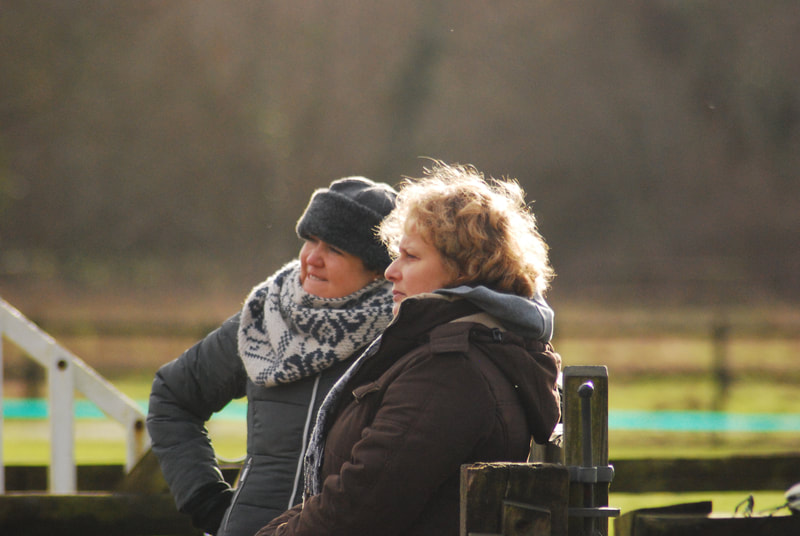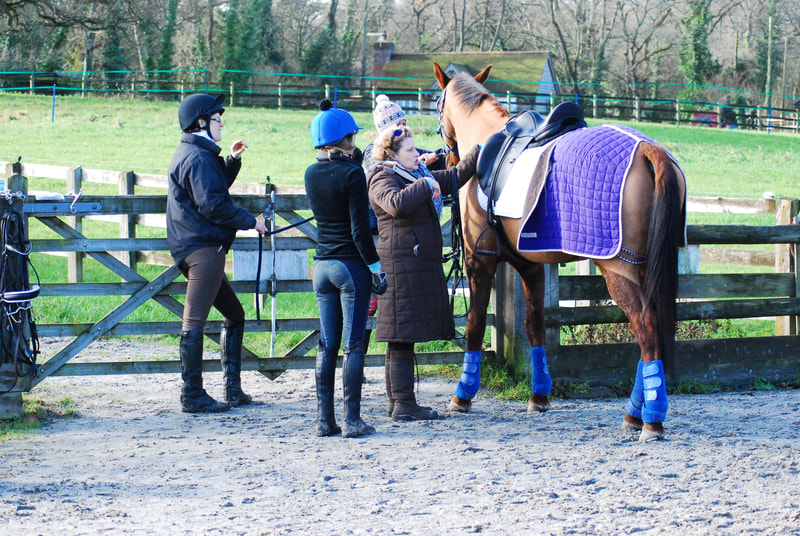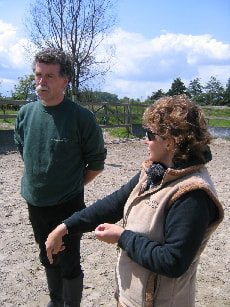|
DOUBLE BRIDLE BITS
Part Two: How they work The whole point of having your horse in a Double Bridle is to have two completely different bits that give you the rider really good signals for your horse to understand giving definition, refinement to your rein handling techniques and more release and reward for your horse. As a rider you must develop the ability to use both reins together and independently and be able to pick up a little more and/or relax each rein to help your horse with its frame and balance. The Bradoon is just a Snaffle and it is the most restrictive of the two bits as it wraps around the tongue and lower jaw in its action. Single Joint: If it has a Single Joint it has a very strong close to it and the horse is unable to escape the triangulated pressure unless the rider lightens the rein pressure on the reins considerably. French Link If it has a French Link the plate and joints keep hold of the horses tongue [especially if the plate is long and the joints fall outside or on the edge of the span of the horses tongue and jaw] unless the rider lightens the rein pressure again considerably. Lozenge: If the Bradoon has a Lozenge assuming the Lozenge is small and neat and the joints do not fall outside the span of the jaw and tongue edges and the joints do not stick into the roof of the horse’s mouth this is probably, for most horses the most comfortable mouthpiece for a Bradoon and if it has the right forward curve to it then has the most release and reward not relying as much on the riders hands to lighten as some of the other choices do. Because the Bradoon is the jointed bit of the two it has the most efficient turning signal and because it sits into the corners of the lips and has a closing action it encourages the Horse to lift the base of the neck. The Weymouth should always be worn with a curb chain or strap and ideally with a Lipstrap as the Lipstrap keeps the chain stabilised and neatly on the jaw and keeps the chain on the bridle at all times. The action of the Weymouth is as follows, as you use the rein the top of the cheek rotates forward and the bottom of the cheek rotates backwards this action presses the mouthpiece down onto the tongue and the lower jaw if the bit has a port the port is rolled forward in front of the tongue which gives the Horse room for the middle of the tongue to move into the space of the port. As the cheek carries on rotating the Horse feels some downward pressure on the poll and before the jaw and poll pressures become too strong the chain moves onto the under-side of the lower jaw stopping the inner mouth and the poll pressure from creating any more pressure. You are trying to set your chain so these three pressures are balanced and do not over ride each other. If you choose the right Weymouth mouthpiece and the cheek is of a balanced length both above and below the mouthpiece this gives the horse a clear signal to Go to the end of the rein Tip the face into a frame Balance in the pace Is the Brakes of the combination of Bits Part Three: Ports Cheeks Shanks and Chains
3 Comments
airmasters
2/25/2021 07:10:32 am
Reply
Leave a Reply. |
Hilary VernonAuthor Archives
April 2023
|





 RSS Feed
RSS Feed